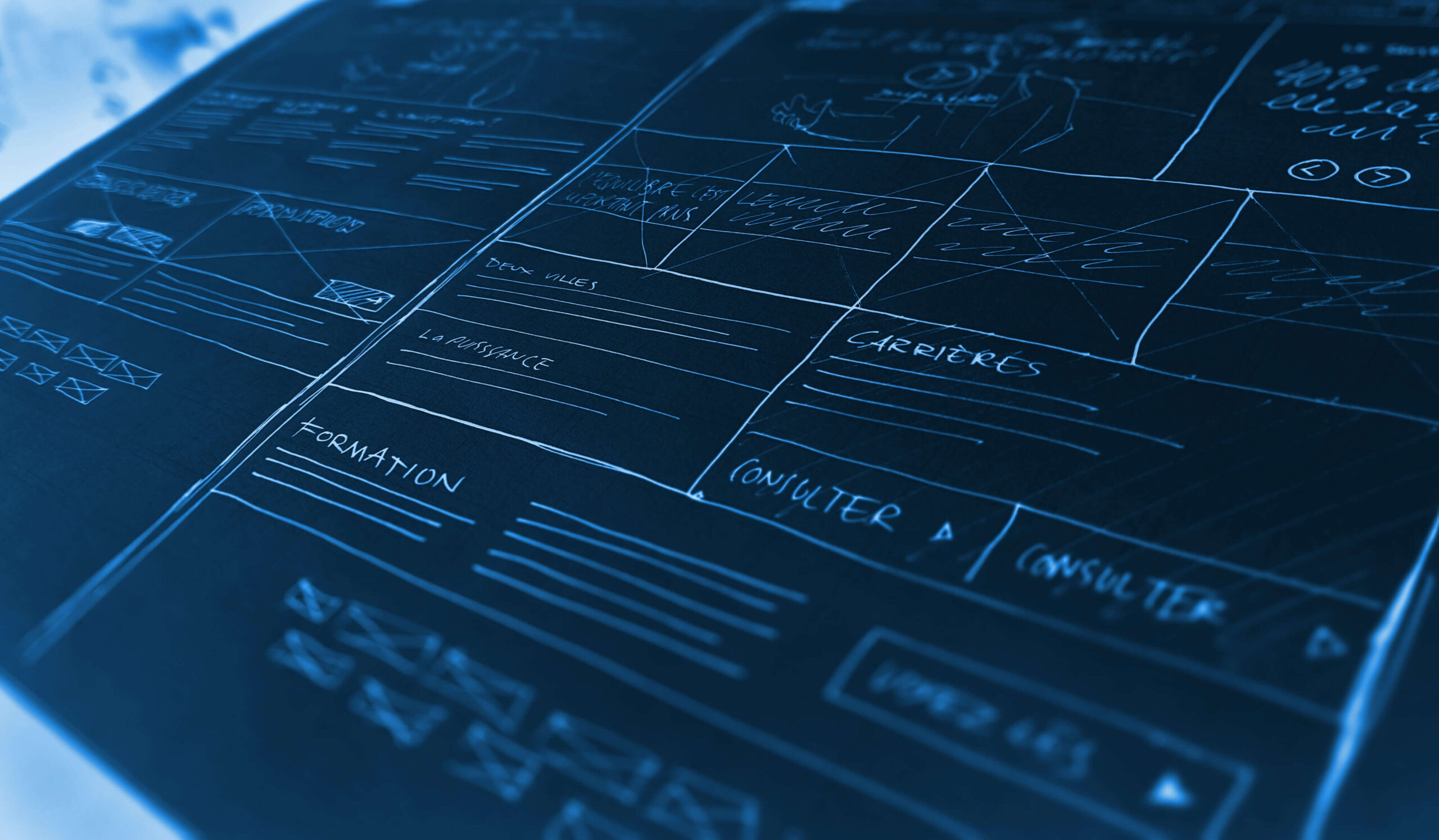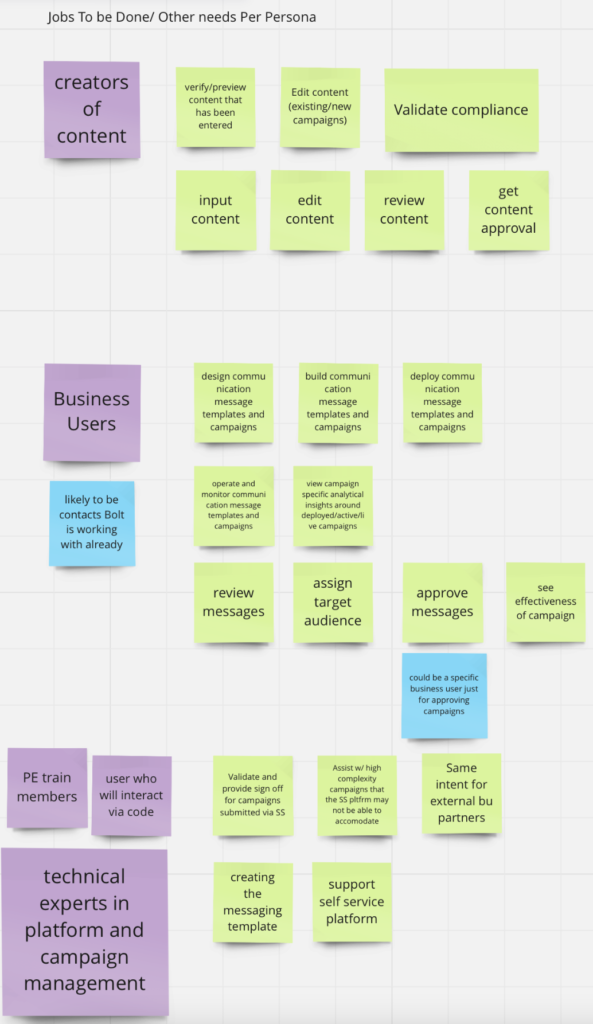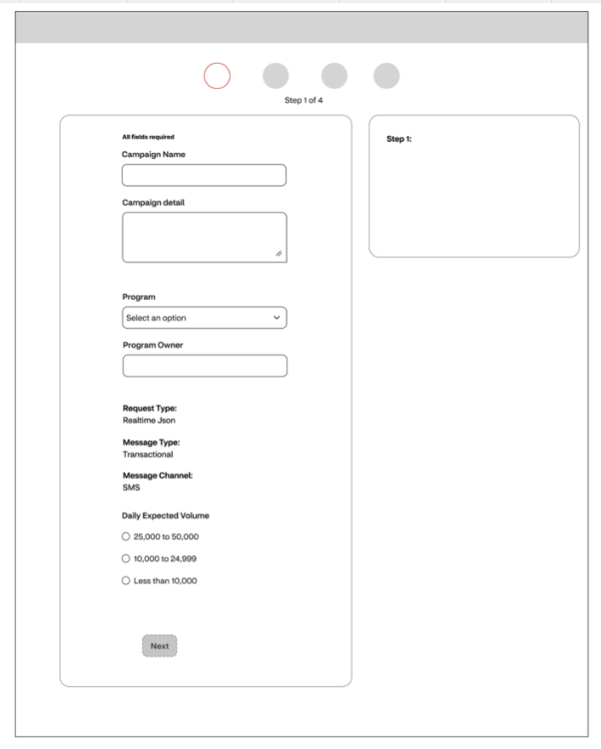Service Design Blueprint
I lead the service design effort as an experience design consultant to enable pharmacy professionals of a Fortune 10 company to make launch SMS campaigns for pharmacy patients using an internal platform – resulting in greater efficiency in creating SMS campaigns. After meeting with the clients on the project, I found there was a significant lack of alignment between cross functional roles within the product team. Though the project had several features, it became clear through moderated testing that the platform was too technical for the intended business-focused audience, causing several points in the process where technical help was needed. As a result, I lead collaboration on the creation of a service blueprint to outline the various process steps, behaviors and users that came into play throughout an SMS campaign launch. By sharing this service blueprint during key decision points, the team was able to better align on the ways in which the platform was expected to serve users as well as the points in which additional manual services would be needed. As a result, the service blueprint helped to inform the product roadmap in a way that would best decrease friction and time to market for SMS campaigns, ensuring greater opportunities for timely customer communications.
.
Role
Lead Experience Design Consultant
Platform
Internal web based platform
Date
January – August 2023

The journey and blueprint can help inform the stories as we continue to grow the product.
Client-side DesignerDESIGN PROCESS
To start, I identified several gaps and areas of misalignment between the product, technology and design organizations involved in the project. Part of the challenge was that the existing prototype was developed by technologists without the input of product or design. This created significant usability problems for the intended audience (business professionals within the pharmacy organization). The biggest problems were the existence of highly technical terminology within the interface which corresponded to programming languages. There were also many processes that could not be completed digitally, and emails, team chat messages and zoom meetings between business users and technologists were a common method to work around technical gaps. The first step was to understand all steps in the process of publishing an SMS campaign including the digital capabilities of the platform. In addition to this, I identified a vital additional audience segment for the platform (content creators). I analyzed the various tasks for each respective audience segment, which helped to shape the greater process outlined in the service blueprint that this informed. This collaboration was instrumental in determining what the product promised to accomplish once launched to employees, creating cross-functional alignment on the problems to be solved.

I lead the strategy session to align on the intended audience, and cross-functional collaboration sessions to create a task analysis for each audience segment.

I collaborated daily with a designer and product manager on the client side to create a service blueprint for the self-service platform to help communicate both the current state as well as share recommendations to the technical team. I also used the service blueprint when meeting with director-level leaders and other key stakeholders to align on requirements from a user-centric perspective.

Outcomes from the service blueprinting work provided value to the team in the form of alignment. For example, we learned that users were confused by the technical language used in the content, which caused an inability to ‘self-service’ their campaign launches. I coached the client side designer to advocate for ways to make the platform more usable, adding to the team’s backlog of work for implementation. This helped to set expectations for how the platform could feasibly be used, and having a robust backlog allowed the team to be able to prioritize future work in a way that would best meet user needs.